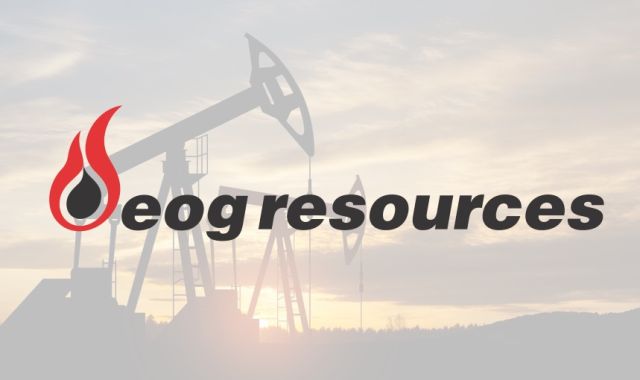
The well is a stepout from where EOG had been exploring, which was in southwestern Dawson. (Source: Shutterstock/ EOG Resources)
EOG Resources Inc.’s new Dean formation well in a southeastern Dawson County, Texas, stepout produced 35,217 bbl in its first month online in the new play, according to Texas Railroad Commission (RRC) data.
The Panther Unit M #1H had been completed in August of 2021 but was shut in until this March. In addition to oil, its first-month gas production in March was 13 MMcf, according to the RRC.
Depth is approximately 9,000 ft. The RRC files did not indicate a completed lateral length or an IP. An RRC GIS viewer indicates the lateral is some 2.5 miles.
The well is a stepout from where EOG had been exploring, which was in southwestern Dawson.
The operator has not publicly commented on its work in the far northern Midland Basin, but told investors in May it is working on a “stealth play” without identifying the play’s location.
‘Technology has evolved’
J.P. Morgan Securities analyst Arun Jayaram asked Jeff Leitzell, EOG’s COO, about the new, unidentified play on June 17 at a J.P. Morgan energy investment conference.
“Normally we don't really pull back the curtain until we actually get to a point of appraisal,” Leitzell said.
He did confirm, however, that EOG is looking into multiple opportunities across the U.S. “where we are [either] just appraising it from a technical aspect and you really don't have to put a lot of dollars into it, or … we are allocating small amounts of capital for exploration.”
On top of unexploited areas, “we're also looking for bypassed opportunities,” he added.
Much of the rock in the Lower 48 has already been drilled throughout the history of E&P, and there is log and other data from those holes. And in this century, a great deal of rock has been looked at with horizontal holes.
“But the thing is, a lot of [the tight-rock formations] were drilled through 10 [years] or 15 years ago—maybe 20 [years] or 30 years ago—and technology has evolved so much that you can go in and you can drill horizontal wells in these and exploit [them with] that technology and you can get just absolutely outstanding returns,” Leitzell said.
In terms of having U.S. prospects, EOG is “in an absolute great place. I think it is probably the most robust prospect portfolio we've had in the history of the company,” he said.
Not Wolfcamp
Also targeting the Dean formation in Dawson County is SM Energy.
Herb Vogel, president and CEO, told investors in May that “there's prospectivity in the Wolfcamp A” underlying Dean in SM’s leasehold in southwestern Dawson.
But “I would say we are not counting that.”
Among SM’s initial tests, the vertical in one was initially drilled below the Dean to take a look at underlying formations, such as the Wolfcamp. It was plugged back and a lateral was kicked off in Dean.
“If we're surprised that thermal maturity [in Wolfcamp A] is higher for some reason there than we expect it to be, that would be great news,” Vogel said.
“But we're really counting on this being more of a migrated-oil play.”
In that, laterals tap oil that soaked into the Dean sandstone from other zones in the northern Midland Basin.
SM’s four-well test of the new play was drilled earlier this year. Data remains in confidential status in RRC files.
The operator picked up the Dawson leasehold—it calls it its Klondike area—last summer from Midland-based Reliance Energy, gaining 20,750 net acres for $93.5 million.
Historically, production from southeastern Dawson targeted the Spraberry, overlying Dean. In southwestern Dawson, though, production has historically been from Dean, according to a 2018 report at the Colorado School of Mines.
Not Canada
Leitzell said EOG is looking at exploration opportunities abroad as well. It already operates offshore Trinidad and is exploring offshore Australia.
“We're extremely excited. We think there's going to be a lot of opportunity internationally,” he said.
“We have an international group in our headquarters that's constantly exploring. And I think they've got a prospect list about as robust as we've ever seen.”
Canada isn’t interesting right now, though, he said.
“What we've really seen is … the overall cost structure—how services and other things work in Canada—can be tough to actually compete with the [Lower 48’s] portfolio.”
Recommended Reading
US E&Ps Could Drop Up to 100 Rigs at New Low Oil Price
2025-04-17 - Private operators are likely to let rigs go first, beginning in the Midcontinent and Powder River Basin, then the Eagle Ford, Bakken and Permian, according to J.P. Morgan Securities.
Kinder Morgan Sees Strong Gas Market, Despite Political Noise
2025-04-17 - Kinder Morgan is undeterred by “perceived ups and downs” in the natural gas market, said Executive Chairman Rich Kinder during the company’s first earnings call of 2025.
Monumental Aims to Restart New Zealand Wells by May 30
2025-04-17 - Monumental Energy Corp. says rig contractor RIVAL is scheduled to begin the workovers on wells Copper Moki 1&2, located in the Taranaki Basin, in May.
US Judge to Decide on Starting Bid in Citgo Parent Auction Following Hearing
2025-04-17 - A U.S. court is to decide on a $3.7 billion offer for shares in the parent of Venezuela-owned refiner Citgo Petroleum.
Woodside to Supply Europe’s Uniper with Up to 2 mtpa of LNG
2025-04-17 - Woodside Energy has signed a sale and purchase agreement to supply Uniper with up to 2 million tonnes per annum of LNG, subject to a final investment decision on its Louisiana LNG project.
Comments
Add new comment
This conversation is moderated according to Hart Energy community rules. Please read the rules before joining the discussion. If you’re experiencing any technical problems, please contact our customer care team.





